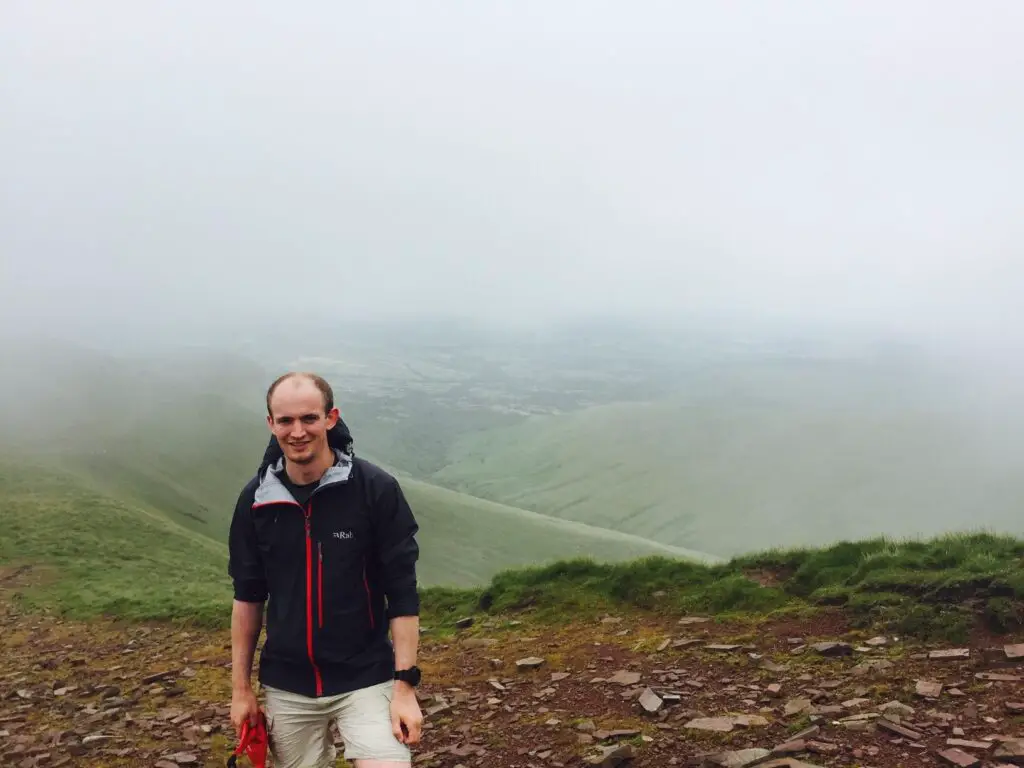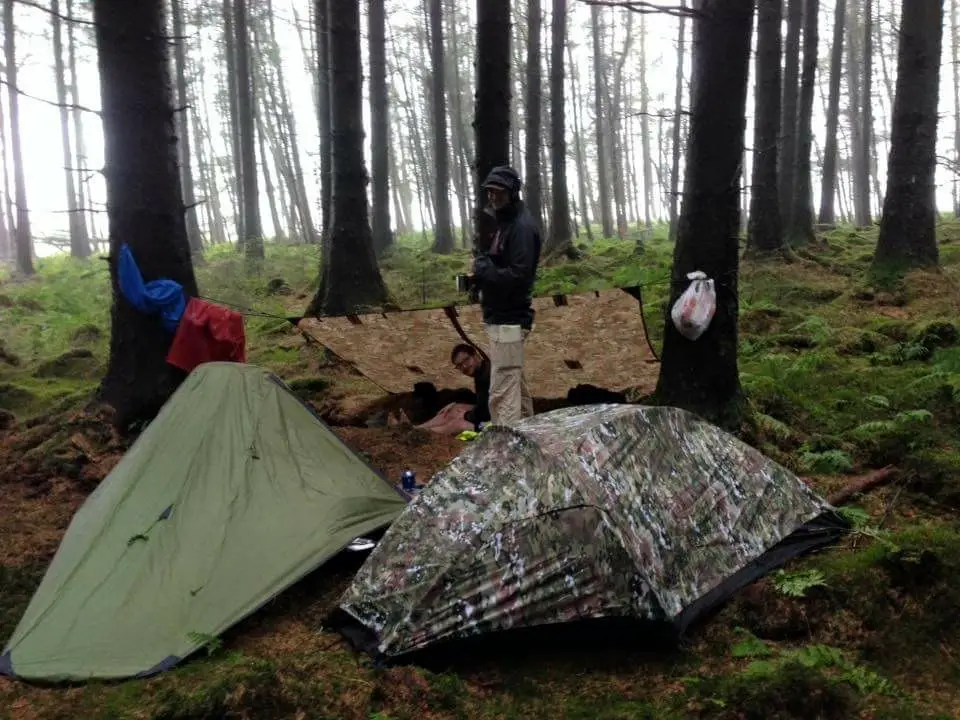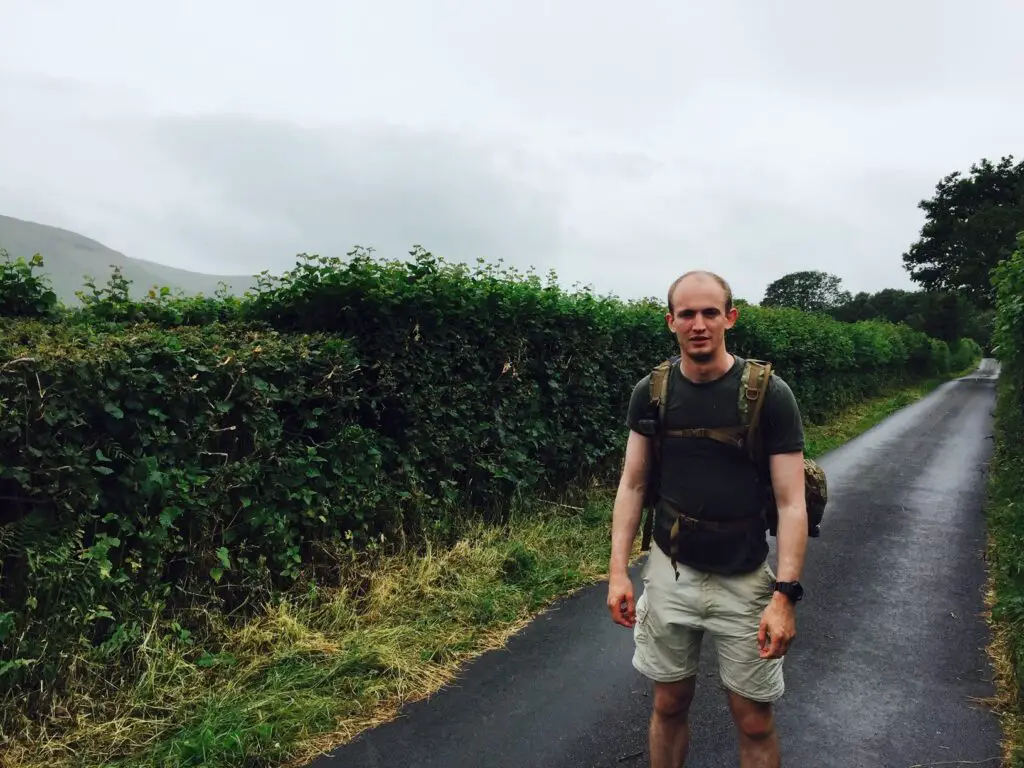Six things I learnt wild camping in the Brecon Beacons

Last summer I decided to hike over Pen y Fan with my brother and a friend, starting from the nearby train station in Merthyr Tydfil and ending in Brecon, where there is a bus back to Merthyr Tydfil. Although this is actually a perfectly achievable one-day hike, we wanted to extend it with some other walks and camp for a couple of nights. Wild camping in the Brecon Beacons is possible as long as you behave responsibly and leave no trace, although as we were very much not planning ahead, I was a little anxious about how easy it would be to find a suitable campsite. Well, here’s what I learned.
Also, yes, the Game of Thrones pun is very much intended and I’m quite proud of it.
1. Brecon Beacons Wild Camping is not that hard
As I mentioned, I was initially nervous about wild camping but there are plenty of woodblocks away from paths where you will be unseen and undisturbed. You simply have to be sensible, avoid leaving any trace of your presence, and be prepared to move on in the very very unlikely event that anyone asks you to. But it’s not like the place is filled with patrols of park wardens.
Wild camping gives you the opportunity to hike and sleep in amazing locations (but not at the four waterfalls as it didn’t feel right). Be bold, but be respectful of the land and other people’s property, and you’ll be fine.

2. What is wet may never dry
For the first part of our walk it was raining lightly on and off, and the long grass was soaked. I had only brought one pair of trousers, which is more than adequate for a two-day hike given weight constraints (see below) but as it wasn’t very cold and I don’t overly mind getting wet I took a fairly cavalier approach to striding through the wet grass and getting my trousers wet. It didn’t seem like a big deal at the time, but by the time we came to set up camp it was pouring down and there was no way anything was getting dry. I had other dry clothes in canoe bags in my daysack of course, but not a second pair of trousers, so they had to be put back on again wet the following day, which was not a great start to the morning. As my trousers were the ones that zip off into shorts, I’d have been much better off doing that as soon as we got to the long grass, as it’s much easier to quickly get wet skin dry in a cramped tent than wet fabric.
Taking the extra time to stop yourself getting wet in the first place is almost always going to be more effective than trying to get dry once you’re already wet.
3. Dry socks mean morale
Despite the above, I had a pair of socks for every day, secure in a canoe bag. They might not be strictly necessary, but putting damp feet into dry socks into wet boots is a lot easier to cope with than putting damp feet into wet socks into wet boots. Believe me. It’s not just a question of comfort either; if you think you can’t get trench foot on a Welsh hillside, try a few days of wearing wet socks and wet boots all the time, and see what happens.
For short trips, I’d say a pair of socks per day is worth the weight. For longer trips, you can dry out a pair (Royal Marines are taught to tuck them into their armpits and let their body heat dry them as they yomp), but doing so might take all day, so a third pair may still be a good idea. Of course, extra socks is extra weight – but not a lot of extra weight, and for many of us the additional comfort will be well worth it.

4. If you want it, you’re carrying it up the mountain
Being comfortable camping isn’t hard. Large tents, air beds, camp stoves, kettles, lamps, dry clothes, etc all make it as comfortable as you want it to be. But then, you’ve got to carry it all up Pen y Fan. My pack ended up weighing around 17kg including food and water, which was hard to restock once we were in the national park. I could have been more comfortable while camping if I’d had a heavier sleeping bag and more dry clothes to change into, but then again I’d have been more comfortable walking up Pen y Fan if I’d had a lighter pack, so it’s all trade-offs.
Just remember that what seems worth chucking in as a ‘just in case’ item when you’re packing in your living room might seem less worth it when you’re carrying it up the mountain. Almost every trip I’ve been on, I’ve come to the conclusion that I could have ditched a bit of kit, gone lighter, and been no less comfortable. Much of that comes through experience.
(Note from Jake in 2020, re-reading this while re-publishing it on TrekSumo. I think the fact that I am now absolutely horrified by the fact that I ever carried a 17kg pack on a two-day hiking trip just bears out the point I am making above. There is no substitute for experience when it comes to figuring out what you do and don’t need on a hike, where you can tolerate cutting corners to save weight and where you can’t, what ‘ultra-light’ kit works and what is garbage, and so on. My PCT pack was substantially lighter than this, even with food for five days, and next time I do a major hike my pack will be lighter again. That’s the learning process.)
5. Even on simple, well-marked walks, there’s no substitute for a map and compass, and knowing how to use them
Pen y Fan is, by most standards, a simple walk. There are several well-trodden paths up it and, assuming you’re taking one of these routes, no advanced navigation is required. However, when we arrived at the top it was shrouded in fog (check out the picture at the top of this article for just how bad the visibility was) and by the time we had taken some photos, had a look around, and chatted to the only other hiker up there, I wasn’t completely sure which way we had come up, let alone which was the route down (we weren’t going down the same way we’d come up, as we were crossing Pen Y Fan on our way from one town to another, remember). In the absence of a map and compass and the basic skills to use them, this could at best have been a time-consuming problem and, at worst, actually dangerous as some of the drops from the plateau at the top of Pen Y Fan are relatively steep. As it was, I was easily enough able to orientate ourselves and identify the route off the top.
It is easy to set out on well-established day hikes like going up Pen y Fan without basic equipment and most of the time you’d probably be fine, but that one time in ten when it’s dense fog at the top, you’ll be glad you can do some simple navigation.
6. Know when to call it a day
The original plan had called for two nights camping, with a short walk on the first day, the hike over Pen y Fan the second day, and some other undefined short walk on the third day. However, by the end of the second day we had achieved our main goal, the rain showed no signs of letting up, we were weary, none of us had any dry clothes, and one member of the party had realised on the first night that his sleeping system probably wasn’t quite adequate for the cold nights and the ceaseless rain. As the organiser and de facto leader, I suggested at that point that we simply get the bus back to Merthyr Tydfil and head home that evening, instead of having an extra night in the field and morning of walking for the sake of it. The suggestion was seized upon with no argument whatsoever and we headed home, turning what could have been a demoralising slog into a thoroughly enjoyable 36 hour trip that is memorable for all the right reasons.
Having a plan is good, but you have to be ready to adapt it to changing circumstances, and the morale and condition of your party.





